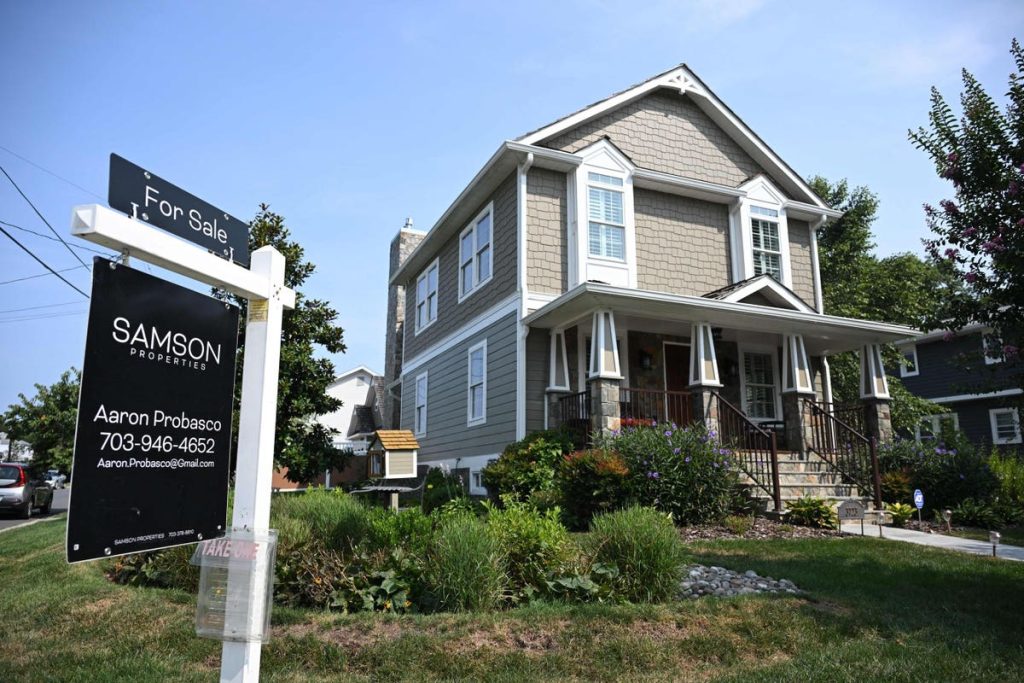Thirty-year fixed mortgage rates are above 7% again, further denting housing affordability. Just a few years ago, similar mortgages carried 3% interest rates.
Simple logic suggests ballooning mortgage spending would raise effective home pricing for many people, hurting home values. But there’s currently an important offsetting trend. It’s reduced supply.
Despite falling home prices for much of 2022, they have rebounded somewhat in 2023. It appears rising interest costs are denting demand for housing, but the reduction in supply from homeowners holding onto properties at lower rates appears to offset softer demand for now.
Housing Affordability
Housing affordability as tracked by the Atlanta Federal Reserve is now at lows not seen since before the financial crisis of 2008. Yes, prices have risen ahead of incomes in recent years. But rising mortgage costs, as the Fed raises interest rates, are the primary driver of a reduction in affordability since 2021.
The last decline in affordability to these low levels on the Atlanta Fed’s data in 2006-2007 did cause absolute declines in home prices over subsequent years. Initially, that was the trend for most of 2022 as home pries fell. But they have rebounded nationally on most metrics in 2023 so far, though the West Coast and neighboring states are still seeing falling annual prices.
Lower Inventory
Lower inventory may be driving this trend. Zillow compares current listing levels to pre-pandemic averages and finds that for July 2023 listings are materially below pre-pandemic levels for all major markets. Part of this may be homeowners with attractive fixed mortgages in place compared to current rates choosing to stay put.
In fact, recent Zillow research found only 21% of homeowners with a mortgage rate of below 5% are considering selling compared to 38% for those with a mortgage costing above 5%. Those locked into low-rate mortgages are almost half as likely to be selling their home. Yes, housing demand may be weaker, but reduced supply may be more than offsetting that currently.
Famed investor Warren Buffett may be seeing this trend, too. His company, Berkshire Hathaway
BRK.B
Regional Variation
Still, housing is a regional market and trends differ by location. Currently a lot of the strength in U.S. home prices is driven by the East Coast and Midwest. The West Coast — including Nevada, Arizona and Texas — is seeing some of the worst affordability trends and generally softer prices. Prices are estimated to be up around 4% year on year in markets such as Chicago and Cleveland, but they have fallen more than 8% in Las Vegas and almost 10% in San Francisco.
Seasonal Factors
Seasonal trends matter, too, and home prices are often expected to be more robust over the summer months. That said, the strength in prices in 2023 appears to be more than just a seasonal rebound on current data, albeit a few months of the year are still to come.
What’s Next?
There’s a chance that the Federal Reserve will move rates higher later this year. This also would move mortgage costs up with it, though we could be pretty close to the top of the interest-rate cycle. Plus, bear in mind, market expectations about how the Fed will act are already factored into long-term mortgage costs. So, only unexpected actions from the Fed should increase mortgage rates. Hence, on a medium-term view, mortgage costs may fall from here should the Fed cut rates more than expected in 2024 — as is possible if inflation wanes.
The greater concern is in a recent speech, Fed Chair Jerome Powell indicated that if home prices didn’t soften, then the Fed might consider further rate hikes to tame inflation. That’s because the cost of housing is one of the largest components of the inflation series, given households spend so much on shelter.
Still for now, U.S. home prices are holding up somewhat better than expected, despite ramping up borrowing costs. If supply remains limited as those with cheap mortgages stay put, then that may continue to support home prices.
Read the full article here















